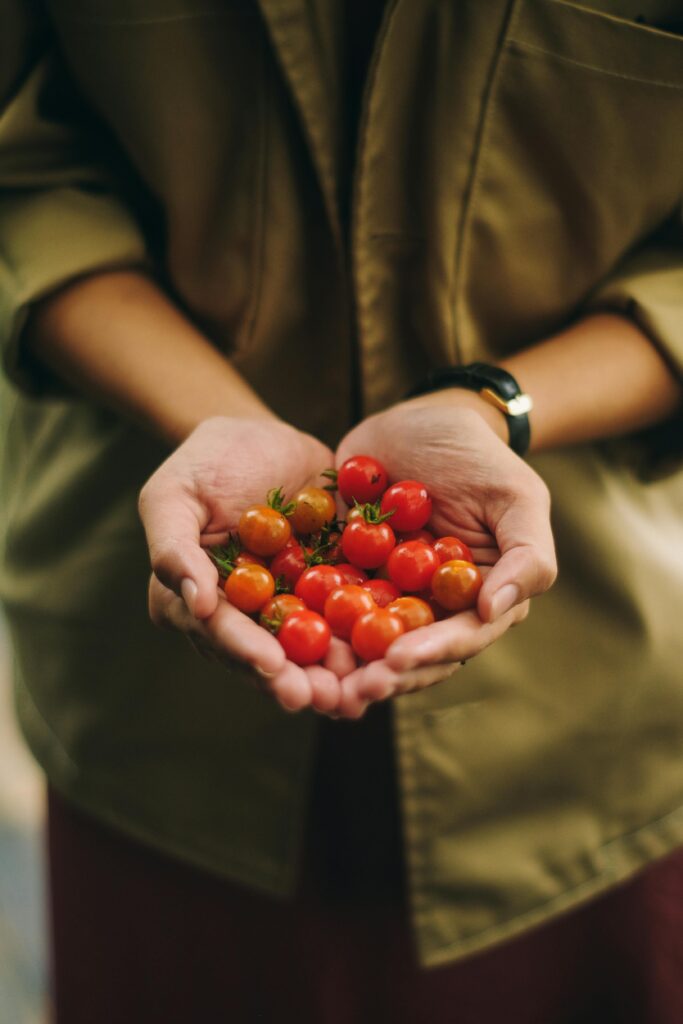“Growing vegetables indoors” refers to the practice of cultivating various types of vegetables within the confines of an indoor environment, such as a home, apartment, or greenhouse. This method allows individuals to grow fresh produce year-round, regardless of outdoor weather conditions or limited gardening space. Indoor vegetable gardening typically involves utilizing containers, potting soil, adequate lighting (natural or artificial), and proper watering and care techniques to support the growth of vegetables. It can be a rewarding and sustainable way to supplement your diet with homegrown produce while also providing a fulfilling hobby.
Several vegetables grow well indoors, making them suitable options for indoor gardening. Here are some examples:
1. Leafy Greens: Lettuce, spinach, kale, Swiss chard, arugula, and mustard greens are all excellent choices for indoor growing. They thrive in containers and can be harvested multiple times.
2. Herbs: Basil, parsley, cilantro, mint, thyme, oregano, and rosemary are among the herbs that grow well indoors. They add flavor to your dishes and are relatively low-maintenance.
3. Tomatoes: Compact varieties of tomatoes, such as cherry tomatoes or determinate varieties, can be grown indoors with proper support and lighting. They require ample sunlight or grow lights and may need hand pollination.
4. Peppers: Dwarf varieties of peppers, like mini bell peppers or chili peppers, can be grown indoors. They need plenty of sunlight or grow lights and may benefit from hand pollination.
5. Microgreens: Microgreens are the young seedlings of various vegetables and herbs, harvested when they are a few inches tall. They grow quickly and are packed with nutrients. Common microgreens include radish, broccoli, kale, and arugula.
6. Scallions: Also known as green onions, scallions are easy to grow indoors from kitchen scraps. Simply place the roots in water or soil, and they will regrow new shoots.
7. Carrots: While carrots typically grow in the ground, certain varieties like Paris Market or Thumbelina can be grown in deep containers indoors. Ensure the container is at least 12 inches deep to accommodate their roots.
8. Radishes: Radishes are quick-growing root vegetables that can be grown in containers indoors. They prefer cooler temperatures and can be harvested in just a few weeks.
These are just a few examples, but there are many other vegetables that can be successfully grown indoors with the right conditions and care. Experiment with different varieties to see what works best in your indoor space.
Growing vegetables indoors can be a rewarding endeavor. Here are some steps to get started:
1. Choose the right vegetables: Opt for vegetables that are well-suited for indoor growing, such as leafy greens (lettuce, spinach, kale), herbs (basil, parsley, cilantro), tomatoes, peppers, and microgreens.
2. Select a suitable location: Find a spot in your home that receives plenty of sunlight, ideally near a south-facing window. If natural light is limited, consider using grow lights to supplement.
3. Gather necessary supplies: You’ll need containers with drainage holes, potting soil, seeds or seedlings, watering can or spray bottle, and fertilizers if needed.
4. Planting: Fill your containers with potting soil and plant your seeds or seedlings according to the instructions on the seed packet or plant tag. Ensure proper spacing and depth for each type of vegetable.
5. Watering: Keep the soil consistently moist but not waterlogged. Check the moisture level regularly and adjust watering accordingly. Avoid overhead watering to prevent fungal diseases; instead, water at the base of the plants.
6. Lighting: If natural light is insufficient, use grow lights to provide the necessary light spectrum for plant growth. Position the lights so they are a few inches above the plants and adjust the duration based on the needs of the vegetables.
7. Temperature and humidity: Most vegetables prefer temperatures between 60-75°F (15-24°C) and moderate humidity. Ensure proper air circulation to prevent fungal issues.
8. Fertilizing: Depending on the type of vegetables and the soil used, you may need to fertilize periodically. Use a balanced, water-soluble fertilizer and follow the recommended dosage.
9. Pest and disease control: Keep an eye out for pests like aphids, spider mites, and whiteflies, as well as common diseases such as powdery mildew. Address any issues promptly using organic pest control methods or appropriate fungicides.
10. Harvesting: Harvest your vegetables when they reach the desired size and maturity. Leafy greens can often be harvested multiple times by picking outer leaves while leaving the inner ones to continue growing. Enjoy the fruits of your labor!
With proper care and attention, you can successfully grow a variety of vegetables indoors year-round.

